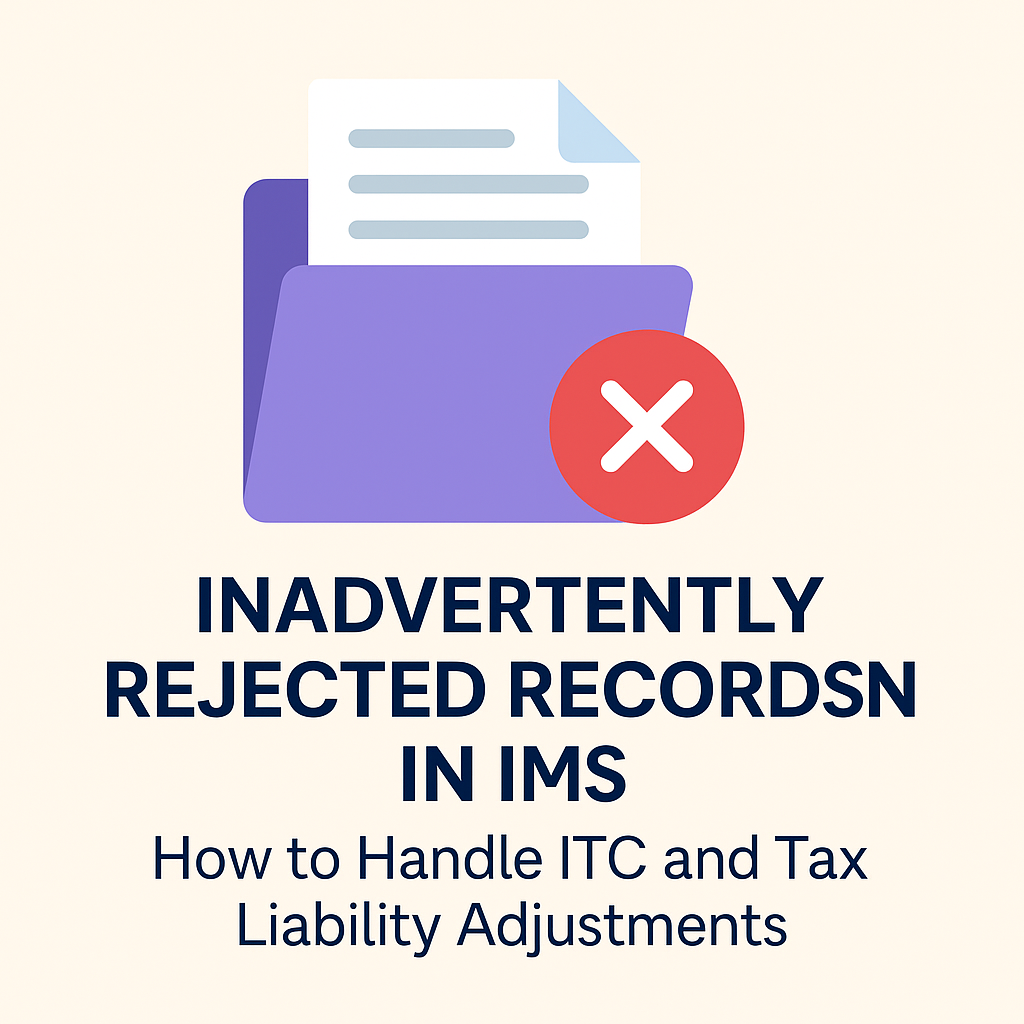How to Handle Inadvertently Rejected Records on the Invoice Matching System (IMS)
Published on: June 19, 2025
Introduction
Taxpayers often face issues with Input Tax Credit (ITC) due to accidental rejections of invoices, debit notes, or credit notes on the Invoice Matching System (IMS). This guide addresses frequently asked questions about how recipients and suppliers can correct these errors without affecting tax liability or missing out on ITC.
Q1. How can a recipient claim ITC for invoices, debit notes, or ECO-documents that were mistakenly rejected in IMS, even though GSTR-3B for the same tax period was filed?
Answer:
If an invoice or related document was wrongly rejected by the recipient in IMS, but the GSTR-3B was already filed, the recipient should request the supplier to re-report the same document without any modifications. This can be done in either:
- The same tax period’s GSTR-1A, or
- The amendment tables of a subsequent GSTR-1/IFF.
Once the supplier re-furnishes the document, the recipient must accept the record in IMS and recompute GSTR-2B. The Input Tax Credit will then be available to the recipient for the full amended value, as the original entry was previously rejected.
However, this ITC can only be claimed in the GSTR-2B of the relevant tax period in which the amendment is accepted.
Q2. What happens to the supplier’s liability if the original record is re-furnished after recipient’s incorrect rejection?
Answer:
If a supplier originally filed the record in GSTR-1/IFF but it was wrongly rejected by the recipient on IMS, the supplier can resubmit the same document (unchanged) via:
- GSTR-1A of the same tax period, or
- Amendment tables of a future GSTR-1/IFF (within the permissible time limit).
In this case, the supplier’s liability does not increase, because the amendment tables only consider the delta (difference) value. Since the re-submitted document matches the original, the net change in tax liability is zero.
Q3. As a recipient, how to reverse ITC for a credit note wrongly rejected in IMS when GSTR-3B is already filed?
Answer:
If a credit note (CN) was incorrectly rejected, the recipient should ask the supplier to re-furnish the CN (unchanged) in:
- GSTR-1A of the same tax period, or
- Amendment tables of a later GSTR-1/IFF.
Once re-submitted and accepted via IMS, the recipient must recompute GSTR-2B, which will reflect the CN and automatically reduce the ITC by the entire original value of the CN.
Q4. What is the impact on the supplier’s liability if a rejected credit note is re-furnished?
Answer:
Initially, when a recipient rejects a credit note, the supplier’s output tax liability increases, since the CN is not considered. However, if the supplier re-reports the same CN (without changes) in:
- GSTR-1A of the original period, or
- Amendment table of a future GSTR-1/IFF,
Then the supplier’s liability is reduced by the same amount as the value of the CN. So, the net liability adjustment occurs only once — increase when CN was rejected, and decrease when re-furnished.
Conclusion
Handling mistakenly rejected records in IMS requires timely communication between supplier and recipient, and accurate use of GSTR-1A or amendment tables. By following the correct process, both parties can ensure accurate tax reporting and claim rightful Input Tax Credit without increasing liabilities.
